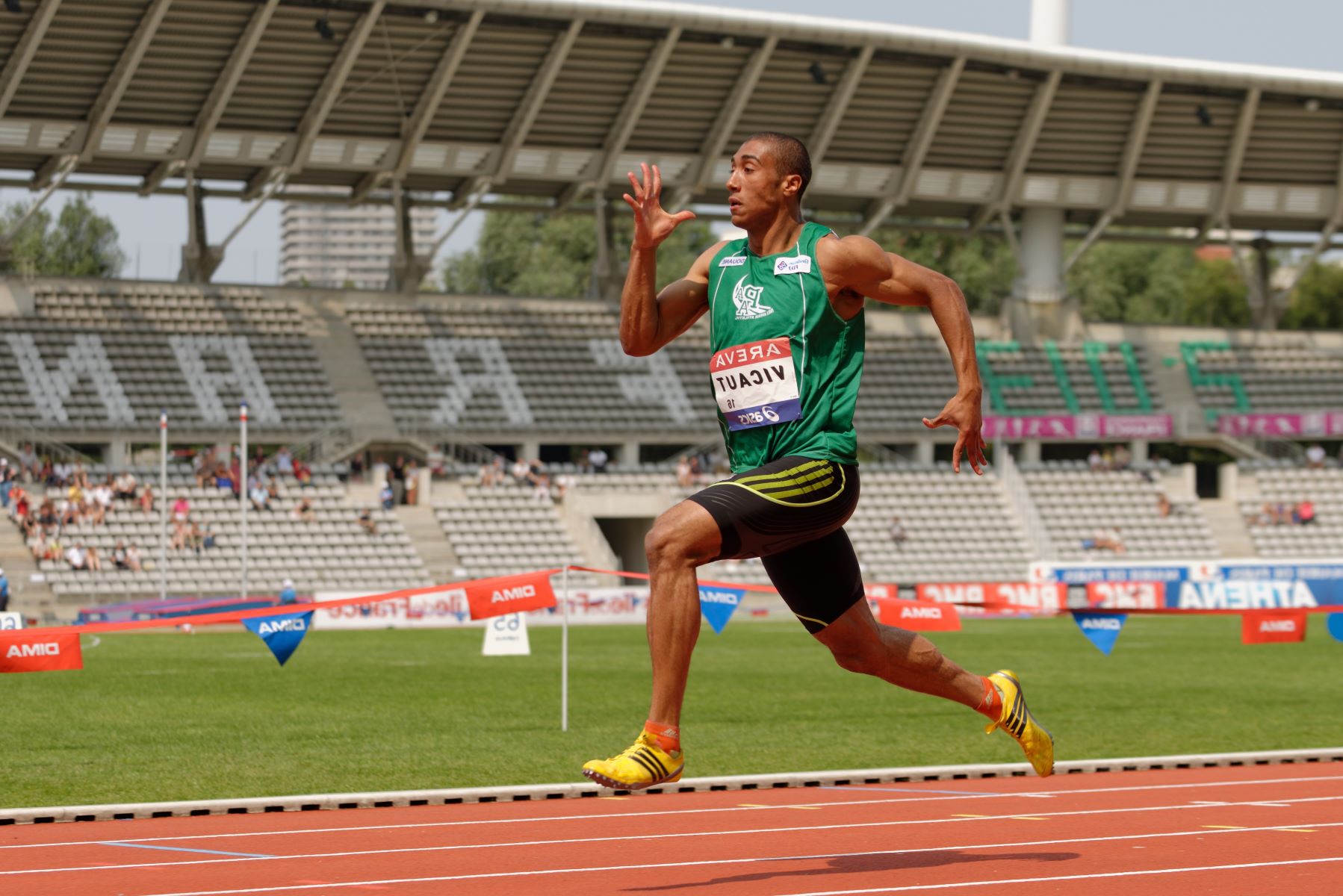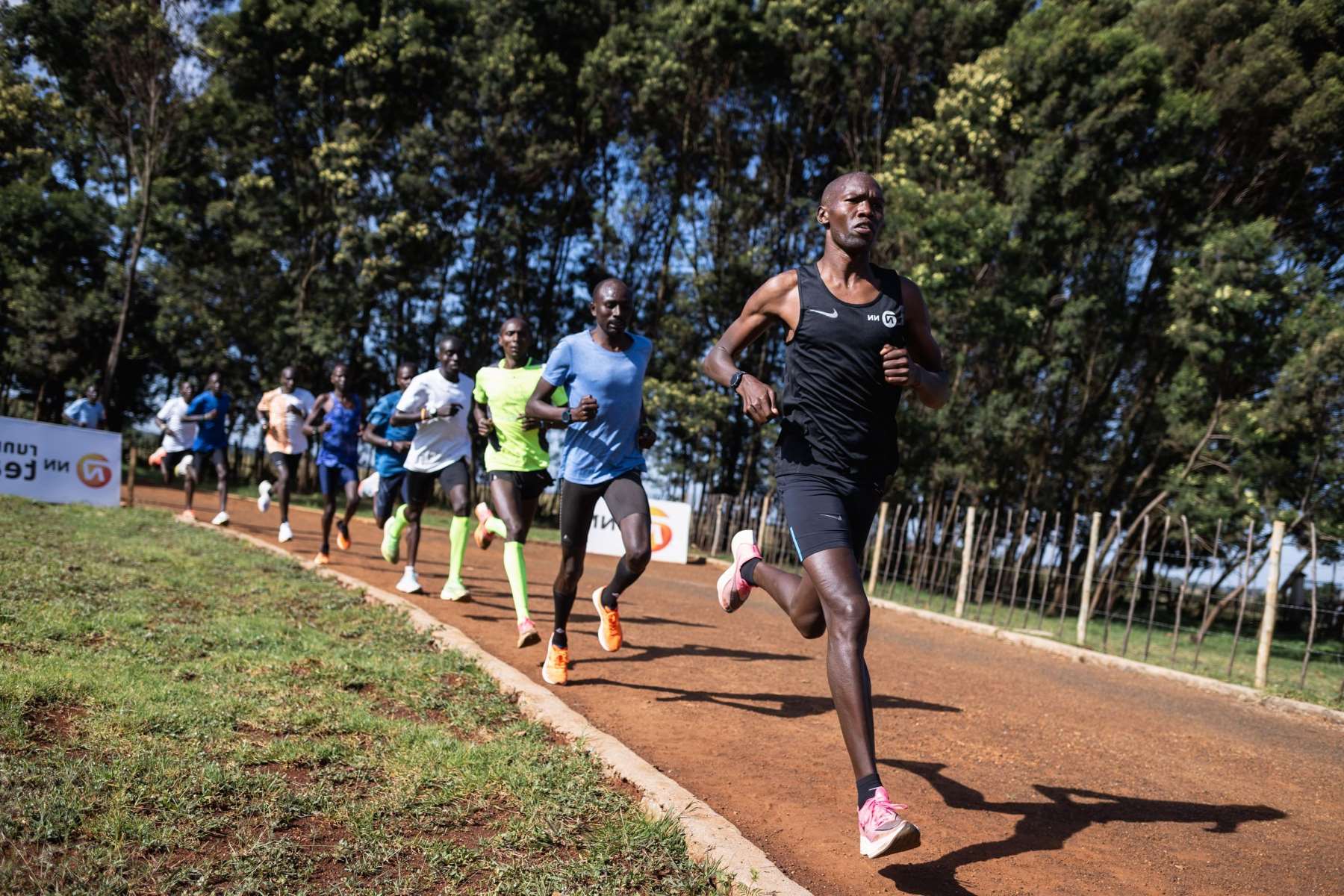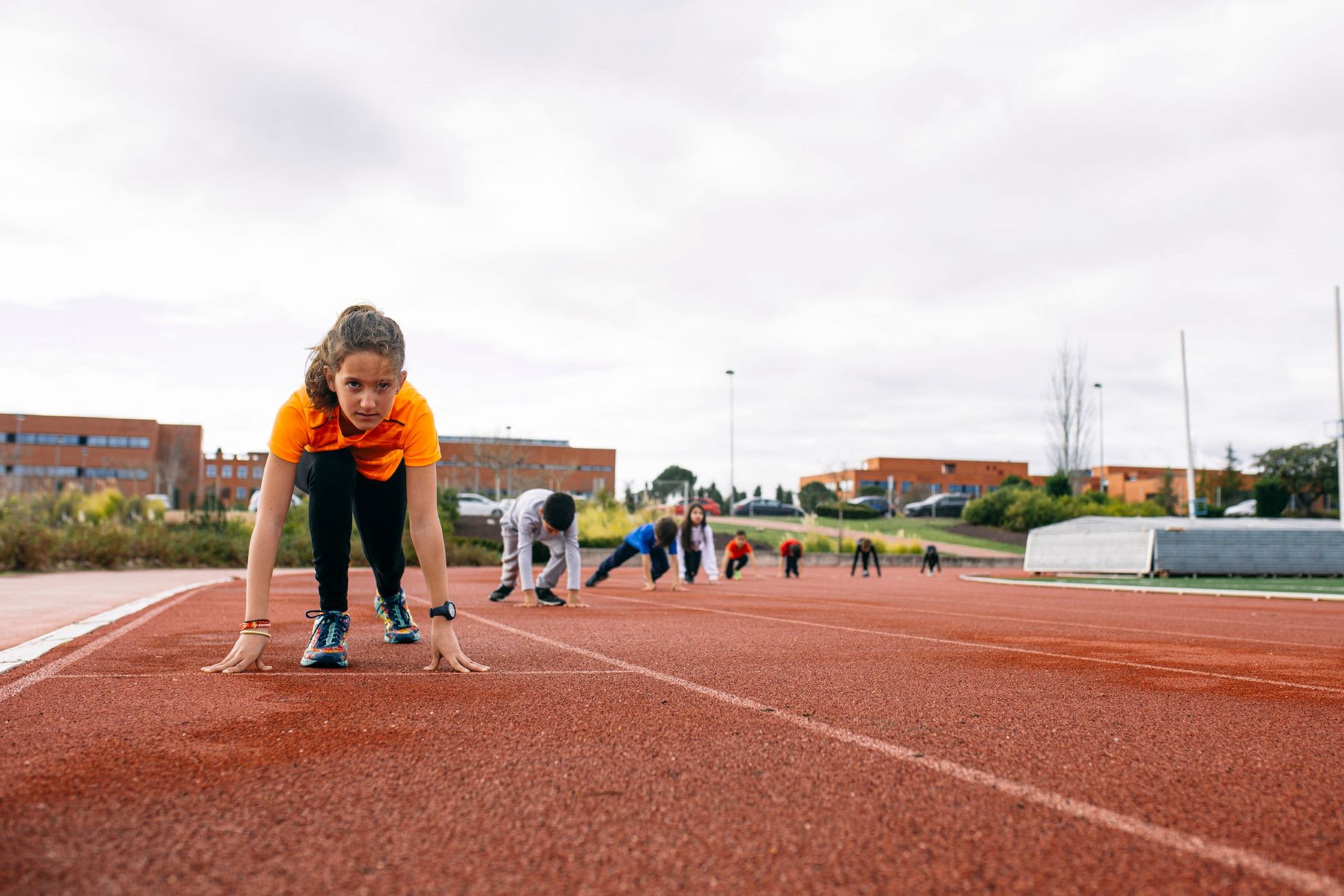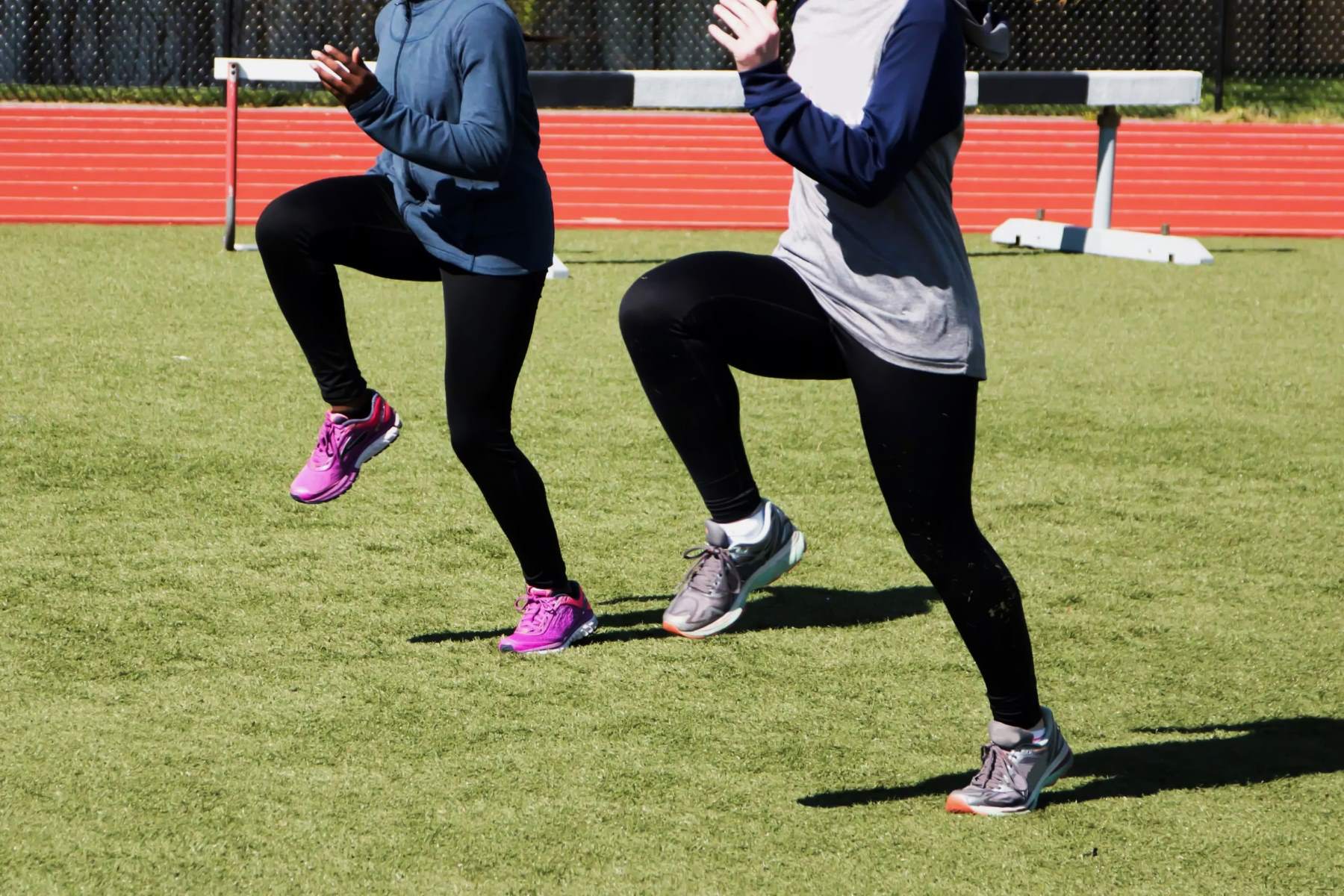Home>Training & Techniques>What Is The Typical Speed For Running?


Training & Techniques
What Is The Typical Speed For Running?
Published: March 2, 2024
Learn about the typical speed for running and improve your performance with effective training and techniques. Find out how to enhance your running speed today!
(Many of the links in this article redirect to a specific reviewed product. Your purchase of these products through affiliate links helps to generate commission for Therunningadvisor.com, at no extra cost. Learn more)
Table of Contents
Factors Affecting Running Speed
Running speed is influenced by a multitude of factors, each playing a crucial role in determining an individual's performance. Understanding these factors is essential for athletes and fitness enthusiasts aiming to improve their running speed. Here are the key elements that impact running speed:
-
Biomechanics: The biomechanics of running encompass various aspects such as stride length, stride frequency, foot strike pattern, and arm swing. Efficient biomechanics can significantly enhance running speed by optimizing energy transfer and minimizing resistance.
-
Muscular Strength and Power: The strength and power of the leg muscles, particularly the quadriceps, hamstrings, and calf muscles, directly influence running speed. Strong and explosive muscle contractions propel the body forward with greater force and efficiency.
-
Cardiovascular Endurance: The capacity of the heart and lungs to deliver oxygen to the working muscles is a fundamental determinant of running speed. Enhanced cardiovascular endurance enables sustained high-intensity efforts, delaying the onset of fatigue during running.
-
Flexibility and Range of Motion: Adequate flexibility in the muscles and joints allows for a more extensive and efficient range of motion during each stride, contributing to improved running speed and reduced risk of injury.
-
Running Economy: This refers to the energy cost of running at a given speed. Factors such as posture, running form, and overall efficiency in utilizing oxygen and fuel sources impact running economy, ultimately influencing speed and endurance.
-
Neuromuscular Coordination: The coordination and synchronization of muscle contractions, nerve impulses, and motor skills play a pivotal role in optimizing running speed. Efficient neuromuscular coordination ensures smooth and powerful movement patterns.
-
Environmental Conditions: External factors such as temperature, humidity, wind resistance, and altitude can significantly affect running speed. Adverse weather conditions and high altitudes may pose challenges to maintaining optimal speed and performance.
-
Psychological Factors: Mental resilience, focus, and motivation can impact running speed. A strong mindset and positive psychological state contribute to sustained effort and performance during running.
Understanding these factors provides valuable insights for individuals seeking to enhance their running speed. By addressing these elements through targeted training and conditioning, athletes and fitness enthusiasts can strive to maximize their running potential and achieve their performance goals.
Read more: What Is The Typical Speed For Walking?
Training Methods to Improve Running Speed
Improving running speed requires a strategic and multifaceted approach that encompasses various training methods tailored to enhance speed, power, endurance, and overall performance. Athletes and fitness enthusiasts seeking to elevate their running speed can benefit from incorporating the following training methods into their regimen:
1. Interval Training:
Interval training involves alternating between high-intensity bursts of running and periods of active recovery or lower-intensity activity. This method effectively enhances cardiovascular fitness, muscular endurance, and speed. By challenging the body to perform at near-maximal effort during intervals, runners can improve their anaerobic capacity and overall speed.
2. Plyometric Exercises:
Incorporating plyometric exercises such as box jumps, bounding, and depth jumps into training routines can significantly enhance explosive power and running speed. These dynamic movements engage the muscles in rapid, forceful contractions, improving muscular strength, coordination, and the ability to generate powerful strides.
3. Hill Repeats:
Running uphill not only builds lower body strength but also improves running economy and power. Hill repeats involve sprinting up a steep incline followed by a recovery jog downhill. This training method effectively targets the quadriceps, hamstrings, and glutes while enhancing stride power and uphill running efficiency.
4. Strength Training:
Integrating targeted strength training exercises, such as squats, lunges, and deadlifts, into a workout regimen can bolster muscular strength and stability, contributing to improved running speed and overall performance. Strengthening the lower body muscles and core provides a solid foundation for generating forceful strides and maintaining proper running form.
5. Speed Workouts:
Dedicated speed workouts, including tempo runs, fartleks, and track intervals, are instrumental in improving running speed. These structured sessions focus on sustained efforts at challenging paces, effectively enhancing aerobic capacity, lactate threshold, and overall speed endurance.
6. Technique Drills:
Engaging in specific running drills and form-focused exercises can refine running mechanics, stride efficiency, and overall technique. By honing proper running form, athletes can minimize energy wastage and optimize propulsion, leading to improved speed and reduced risk of injury.
7. Recovery and Regeneration:
Adequate rest, recovery, and regeneration are integral components of training to improve running speed. Incorporating rest days, proper nutrition, hydration, and recovery modalities such as foam rolling and stretching supports muscle repair, adaptation, and overall performance enhancement.
By integrating these diverse training methods into their routines, individuals can systematically enhance their running speed, power, and overall athletic performance. Consistency, progressive overload, and individualized programming are key principles to consider when implementing these training methods, ultimately contributing to sustained improvements in running speed and overall fitness.
Read more: Summer Running: What To Do And What To Avoid
Common Mistakes that Slow Down Runners
Identifying and rectifying common mistakes is pivotal for runners aiming to optimize their performance and speed. Several prevalent errors can impede running efficiency and hinder speed development. Recognizing and addressing these mistakes is essential for individuals seeking to elevate their running capabilities. Here are the common mistakes that can slow down runners:
-
Overstriding: Extending the stride too far ahead of the body can lead to braking forces, inefficient energy transfer, and increased risk of injury. Overstriding hampers forward propulsion and can diminish running speed.
-
Inadequate Warm-Up: Failing to perform a proper warm-up before running can limit muscle elasticity, reduce joint mobility, and compromise running efficiency. A thorough warm-up routine primes the body for optimal performance and helps prevent potential setbacks.
-
Poor Running Form: Incorrect posture, excessive upper body movement, and inefficient arm swing can diminish running speed and lead to unnecessary energy expenditure. Maintaining proper running form is crucial for maximizing speed and minimizing energy wastage.
-
Improper Footwear: Wearing worn-out or ill-fitting running shoes can contribute to discomfort, reduced stability, and compromised biomechanics. Appropriate footwear that supports the natural gait and provides adequate cushioning is essential for optimal running speed.
-
Inadequate Recovery: Insufficient rest and recovery between training sessions can lead to fatigue, decreased muscle readiness, and diminished running performance. Adequate recovery is vital for muscle repair, adaptation, and sustained speed development.
-
Neglecting Strength Training: Overlooking strength training and focusing solely on running can lead to muscular imbalances, reduced power output, and compromised running speed. Incorporating targeted strength exercises is crucial for enhancing running performance and speed.
-
Inconsistent Training: Irregular training patterns and inconsistent workout routines can impede progress and hinder speed development. Consistency and structured training are essential for sustained improvements in running speed.
-
Ignoring Nutrition and Hydration: Poor dietary choices and inadequate hydration can negatively impact energy levels, muscle function, and overall running performance. Proper nutrition and hydration are vital for sustaining energy levels and optimizing running speed.
By recognizing and addressing these common mistakes, runners can proactively enhance their running speed and overall performance. Implementing corrective measures, seeking professional guidance, and maintaining mindfulness during training and running activities can contribute to significant improvements in speed and efficiency.
The Importance of Proper Nutrition for Running Speed
Proper nutrition plays a pivotal role in optimizing running speed and overall athletic performance. The fuel and nutrients consumed significantly impact energy levels, muscular function, recovery, and endurance, all of which are essential for enhancing running speed. Athletes and runners must prioritize their dietary choices to support their training and speed development.
Fueling Performance
Carbohydrates serve as the primary fuel source for running and high-intensity activities. Adequate carbohydrate intake replenishes glycogen stores in the muscles and liver, providing readily available energy for sustained running speed and performance. Incorporating complex carbohydrates from sources such as whole grains, fruits, and vegetables supports prolonged energy release and helps prevent fatigue during runs.
Muscle Repair and Recovery
Protein is crucial for muscle repair, recovery, and adaptation following intense training sessions. Consuming adequate protein supports the repair of microtears in muscle fibers, facilitates muscle growth, and aids in the maintenance of lean muscle mass. Including lean sources of protein such as poultry, fish, legumes, and dairy products in the diet is essential for optimizing muscle recovery and supporting running speed development.
Read more: Does The Cold Affect Your Running Speed?
Hydration and Electrolyte Balance
Proper hydration is fundamental for maintaining optimal running speed and performance. Dehydration can impair muscular function, reduce endurance, and hinder speed development. Adequate fluid intake, along with electrolyte balance, supports efficient muscle contractions, temperature regulation, and overall running efficiency. Hydration strategies should be tailored to individual sweat rates and environmental conditions to sustain running speed and prevent performance decline.
Micronutrient Support
Vitamins and minerals play essential roles in energy metabolism, oxygen transport, and muscle function, all of which are critical for running speed. Nutrient-dense foods rich in vitamins C, E, B-complex, and minerals such as iron, magnesium, and potassium support overall health, immune function, and optimal running performance. Ensuring a well-rounded and varied diet that includes a spectrum of micronutrients is vital for sustaining running speed and promoting recovery.
Timing and Pre-Run Nutrition
Strategic timing of meals and snacks is crucial for optimizing running speed. Consuming a balanced meal or snack containing carbohydrates and a moderate amount of protein before a run can provide the necessary energy and nutrients to support speed and endurance. Tailoring pre-run nutrition to individual preferences and digestive comfort is key to sustaining running speed and minimizing gastrointestinal discomfort during runs.
By prioritizing proper nutrition, runners can effectively support their training efforts, enhance running speed, and promote overall performance. Individualized dietary strategies, informed by professional guidance and personal preferences, can significantly contribute to sustained improvements in running speed and athletic achievement. Making informed and mindful dietary choices is integral to maximizing running potential and achieving performance goals.
How to Measure and Track Running Speed
Measuring and tracking running speed is essential for monitoring progress, evaluating performance, and implementing targeted training strategies. Several methods and tools can be utilized to accurately measure and track running speed, providing valuable insights for runners seeking to optimize their training and achieve their speed-related goals.
Read more: What Is Your Running Distance Limit?
GPS Technology
Utilizing GPS-enabled devices, such as sports watches and smartphone apps, offers a convenient and reliable means of measuring running speed. GPS technology provides real-time data on pace, distance covered, and overall speed, allowing runners to monitor their performance during training sessions and races. These devices also enable the tracking of running routes, elevation changes, and performance trends, offering comprehensive insights into speed variations across different terrains and training conditions.
Running Speed Sensors
Running speed sensors, often worn on the shoe or integrated into specialized running footwear, provide accurate measurements of running speed and cadence. These sensors utilize advanced motion tracking technology to capture precise data on stride length, foot strike patterns, and running speed, offering valuable feedback for optimizing running mechanics and speed development. By analyzing the data collected from these sensors, runners can identify opportunities for improving efficiency and maximizing speed output.
Track Workouts and Time Trials
Conducting track workouts and time trials on a standard 400-meter track or a measured course provides direct assessments of running speed. Timing intervals, lap splits, and overall completion times during structured speed workouts and time trials offer tangible performance metrics for evaluating running speed improvements. Regularly incorporating these assessments into training routines enables runners to gauge their progress, set realistic speed targets, and tailor training plans to address specific speed-related objectives.
Video Analysis
Video analysis, often facilitated by coaches or sports professionals, offers a visual assessment of running mechanics, form, and speed. High-speed video recordings can capture intricate details of running technique, stride efficiency, and propulsion, providing valuable feedback for refining running speed and minimizing inefficiencies. Analyzing video footage allows runners to identify areas for improvement and implement targeted adjustments to enhance running speed and overall performance.
Race Performances and Split Times
Participating in races and utilizing split times from race events provides direct measures of running speed under competitive conditions. Analyzing split times for specific race distances, such as 5K, 10K, half-marathon, and marathon, offers insights into pacing strategies, speed variations, and overall race performance. By evaluating race performances and split times, runners can identify strengths and weaknesses in their speed capabilities, informing future training and race strategies.
By leveraging these diverse methods for measuring and tracking running speed, runners can gain comprehensive insights into their performance, identify areas for improvement, and implement targeted training approaches to optimize their running speed. Consistent monitoring and analysis of running speed data empower runners to make informed decisions, set realistic speed-related goals, and strive for continuous improvements in their speed and overall athletic performance.











